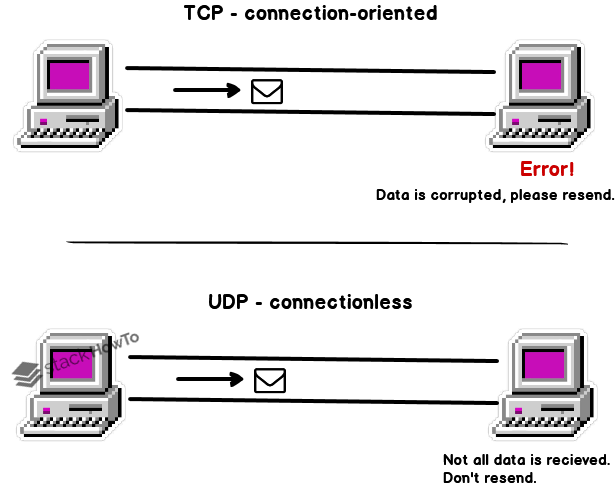UDP Protocol
In this tutorial, we are going to see What is the UDP Protocol? The User Datagram Protocol (UDP) is a connectionless protocol of the transport layer of the TCP/IP model. This protocol is very simple since it does not provide any error control (it is not connection-oriented…).

The header of the UDP segment is therefore very simple:

Image source: www.wikimedia.org
Meaning of the different fields:
- Source port: this is the port number of the application sending the UDP segment. This field represents a response address for the recipient. This field is optional, which means that if the source port is not specified, the 16 bits of this field will be set to zero, in which case the recipient will not be able to reply (this is not necessarily necessary, especially for unidirectional messages.
- Destination Port: This field contains the port corresponding to the application of the destination machine to which you are addressing.
- Length: This field specifies the total length of the segment, including the header. The header has a length of 4 x 16 bits (i.e. 8 x 8 bits) so the length field is necessarily greater than or equal to 8 bytes.
- Checksum: This is a checksum realized in such a way as to be able to control the integrity of the segment.





